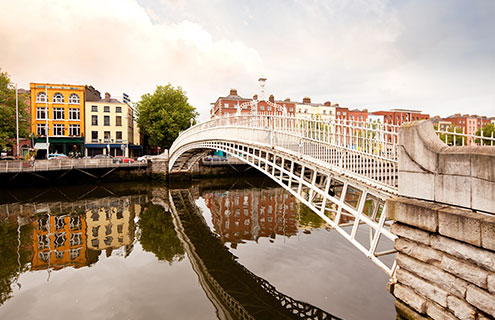Dublin had 165 captives registered at the end of 1999, up from 153 in the previous year. At the end of 2001, Dublin had 181 registered captives, compared with 183 at the end of 2000. There were 308 licensed insurance and reinsurance companies in Ireland writing some €58 billion gross written premium in 2009.
Dublin had 165 captives registered at the end of 1999, up from 153 in the previous year. At the end of 2001, Dublin had 181 registered captives, compared with 183 at the end of 2000. There were 308 licensed insurance and reinsurance companies in Ireland writing some €58 billion gross written premium in 2009.
Though published captive numbers in Dublin have declined since, Stuart King, senior consultant at Aon Global Risk Consulting, Ireland, asserts that among Aon’s client base, “the true premium volume has not materially decreased, and we believe this is due to many clients consolidating their captives following acquisitions and the like”.
“Global captive formation is flat to moderately up,” he adds. “Notwithstanding increasing regulatory requirements in many mature captive domiciles and continued favourable commercial insurance market conditions, many captive owners remain of the opinion, as risk management programmes become more sophisticated, that captive utilisation continues to be strategically important.”
Finer points
Many captive owners are preparing for Solvency II by exploring the benefits of diversification that the new regime is expected to bring.
“We see a reasonably level playing field emerging across European domiciles under Solvency II,” states King. “Ultimately there should be little to choose between supervisory requirements and operating costs of a captive within any of the EEA (European Economic Area) countries. However, there is scope for supervisory authority judgment, particularly where the proportional application is anticipated and for this, understanding the risk profile of a captive and the owners need to be clear.”
He adds that this fact, in theory, should favour Ireland where the Central Bank of Ireland has a clear understanding of the captive insurance company, and he attributes the introduction of a risk-based supervision framework as just one example.
“We have seen some strong and welcome initiatives from the Central Bank of Ireland in 2011 in relation to the Captive Insurance industry in Ireland. Certainly the introduction of a risk-based supervision framework, PRISM (Probability Risk and Impact System), in December 2011 clarifies their proportionate approach to entities such as ‘captives’, in other words, those with the lowest potential adverse impact on financial stability and the consumer. The Central Banks’s issuance of a specific ‘corporate governance code for captive insurance undertakings’ confirms this understanding and willingness to accept the different risk profile of a captive.”
He adds: “Aon Insurance Managers Dublin recently assisted a large international organisation establish a direct writing captive in Dublin to issue pan-European direct insurance policies. Our experience of the Central Bank of Ireland application process was positive and quick. This indicates the Insurance Regulator is keen to attract premier organisations to the domicile. This captive is now part of a multi-captive strategy adopted by the group.”
According to Aon’s global captive benchmarking data, there are 27 different types of insurance coverage being underwritten by Dublin captives, as presented in Figure 1.
King stresses the importance of engaging with clients to assess captive suitability for self-retained risks outside of traditional insurance arrangements, such as surety and guarantee products, cyber, patent, trade credit and employee benefits: “Our benchmarking data also highlights that Dublin captive owners favour establishment of direct writing captives (see Figure 2) with the ability to issue insurance policies in EU member state territories on a Freedom of Services basis.”
“At 50 percent, captive owners from the EU (typically UK, France and Spain) continue to represent the largest users with US owners at 39 percent, the remainder includes Asian captive owners. Many have a strategy of control of insurance arrangements, such as policy and claims administration, and driving down of total cost of organisational risk by formalising risk within a captive.”
After 25 years as a captive centre, Dublin still has a lot to offer. Based in the EU but with an English-speaking workforce, with a cross-border passport and reiterated governmental support of the 12.5 percent corporation tax rate, Dublin seems well positioned to expand when the insurance business starts to find chinks of light in the financial gloom gripping much of Europe.





